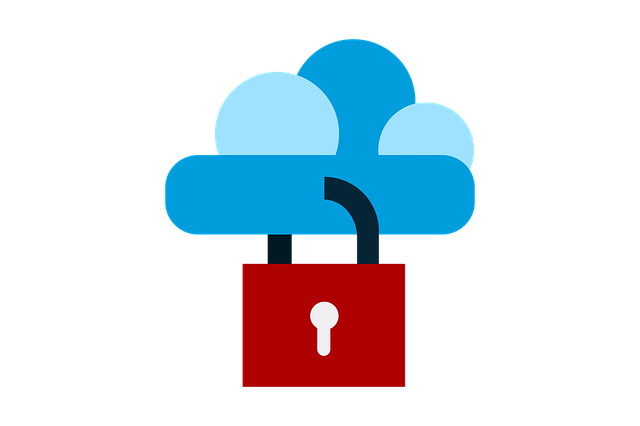Top 9 Cloud Computing Security Myths and Facts
Cloud Computing is a term defined as sharing of configured computing resources like computer networks, storage, server that allows uses to store and processes the data in third party data centers located at distant places. However, cloud computing depends upon the trust of cloud service provider (CSP). For IT and business stakeholders evaluating the cloud as a solution to their budding amount of data and increasing need for information resources, cloud solutions seems an attractive option. Still cloud computing is covered with many myths security issues that makes it suspicious and vulnerable among individuals and organizations. In this narration, we will uncover common myths of cloud computing and truth lies behind these myths.

Image Credit: Pixabay
1. Cloud Infrastructure is insecure
The Myth : Many of us have doubt that in multitenant environment, cloud infrastructure is insecure than traditional IT infrastructure.
The Truth : There are three types of layers in cloud computing like hypervisor, management and multitenant network. Customers from same cloud cannot attack on each other as they are partitioned by isolating VLAN (Virtual LAN). Customers cannot gain access to same networks even from the same provider. The management layer must be patched and placed on a separate management network. Thus, management layer will remain inaccessible from the end user. Cloud service subscribers should assess applications as per cloud requirements. Cloud providers also offer mitigation practices to reduce multitenancy attack.
2. External Threat affects Cloud
The Myth : External threat is threatening cloud in severe manner.
The Truth : External threats like data breach, account hijacking, DDoS attack can be mitigated with security solutions. Cloud service provider should think seriously on security issues while providing the service. There are different solutions like vulnerability scanning, encryption, firewall, multifactor access control can mitigate external threats. These threats do exist but they are not periling to the cloud. By applying security defenses, the service provider can create a secure environment for users. It is customer’ duty to find a right service provider that can provide physical and virtual security.
3. Data Residency is a Problem
The Myth : Customer does not have control where the data resides.
The Truth : Data residency depends upon the country’s law, which may differ from territory to territory. Some countries do not allow export and storage of data in other countries. When data residency is an issue then the data center of a CSP should be considered. The provider with multiple data centers located at different countries should be selected. Organizations can satisfy needs based on locations along with strict data governance policies. Cloud provider with multiple global data centers and data accountability and private cloud is an ideal solution to it.
4. All Operations should be under a single Vendor
The Myth : A single vendor knows your business requirements and process as well saves money to be spent after multiple providers.
The Truth : It is myth that a single vendor can simplify all needed tasks. Actually, it may complicate the operation. CSP offers many tasks and many models like infrastructure (IaaS), applications (SaaS), and platforms (PaaS). The cloud usage should be aligned with business requirements. When multiple tasks are conglomerated then it is sensible to find the best provider for each task you transfer to the cloud. While making a cloud strategy, you should understand the multiplicity of your company’s requirements and should go with diverse service providers.
5. Moving to the cloud means that we will lose control
The Myth : Once we move to the cloud, we will have no control of operations.
The Truth : Cloud offers data automation with data governance. CSP should have good security plan and resources to assure that the operation is secure. You will have data policies aligned with business objectives that gives data control and frees up business stakeholders and IT team to work closely on data.
6. Cloud offers unlimited resources
The Myth : The cloud virtual servers gives unlimited memory and processing power at free of cost.
The Truth : When you consume more resources than your business needed, it will be a bad practice, as it will charge extra from you. It also depends upon the price model that you wish to select. You need to set up strategy with cloud provider with a fixed budge else, you will have to pay cost for each additional resource you consume.
7. What your CEO said is Cloud Strategy
The Myth : Many companies are doing just what their CEO is said to do so and it is an ideal cloud strategy.
The Truth : It is myth that what your CEO or higher management says is your cloud strategy. A cloud strategy starts with discovering business goals and planning possible cloud benefits for business as well reduce the potential drawbacks. Cloud computing strategy should have aim to improve organization’s ability to respond business market opportunities.
8. Big Data does not need Cloud Solution
The Myth : Big Data does not need to be stored in cloud, as it will not affect business.
The Truth : Big data is growing day by day and needs a serious monitoring and analysis. If big data is not taken into account which could lead to ineffective storage. Your business may lose important insight and connection because of unstructured data. When you move big data into cloud, it will provide efficient data storage and offers structured data management, as a result business will achieve competitive benefits.
9. Combination of BYOD and Cloud seems no Beneficial
The Myth : BYOD implementation and its aligning with cloud computing seems not fruitful.
The Truth : Organizations do not need to spend on employee devices as employees bring their own devices as well cloud computing allows them to store data in cloud which saves paper cost of printing, paper revision. Business aligned with cloud computing offers website filtering that keeps track of websites that employees visit during office hours.
Conclusion:
Your business can take benefit from cloud computing and its resources. Educating about cloud can give immense benefits to your business. The cloud also provides security environment that customers can put trust so the above myths should be avoided to continue your business benefiting from cloud technology.


